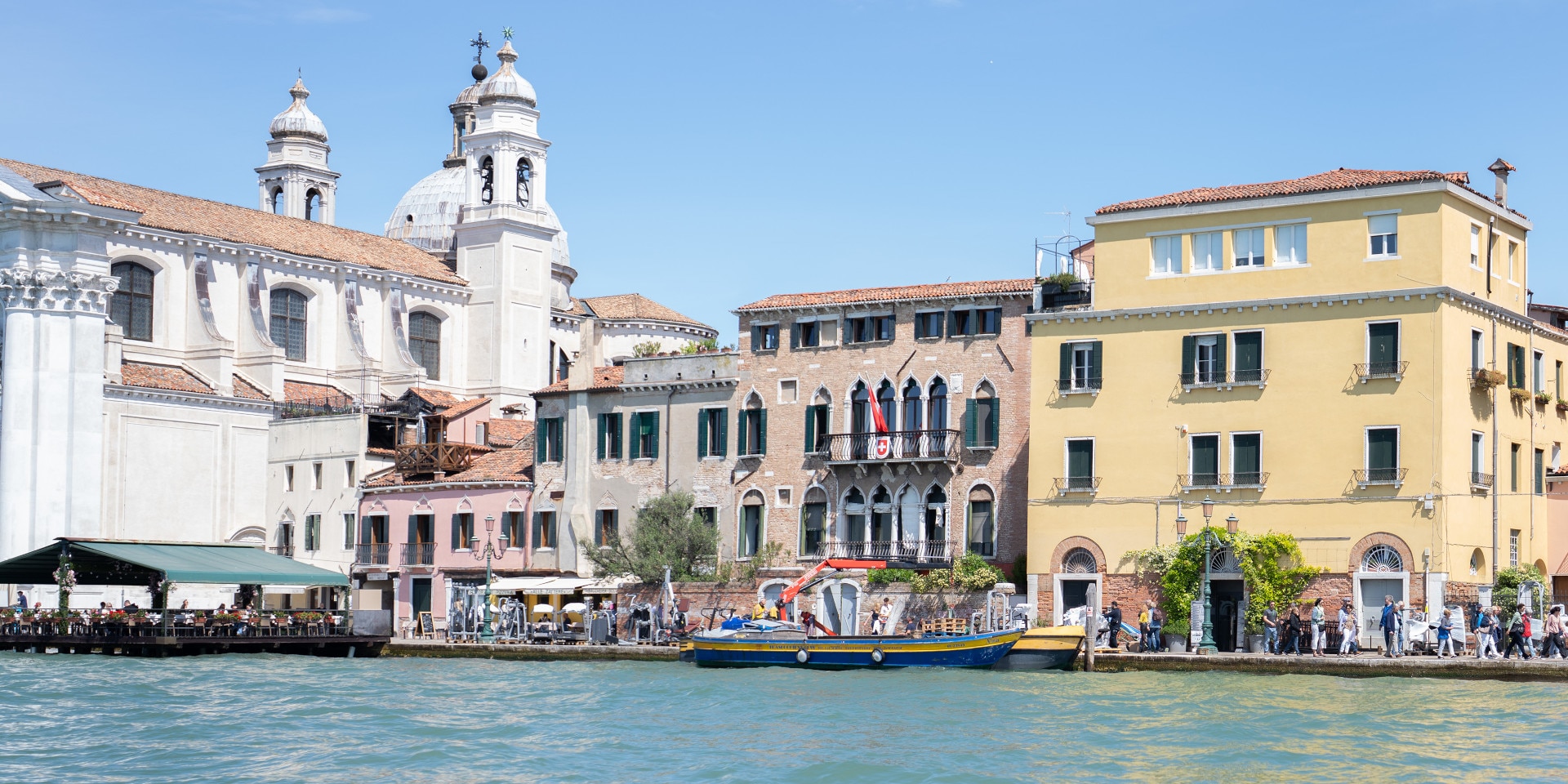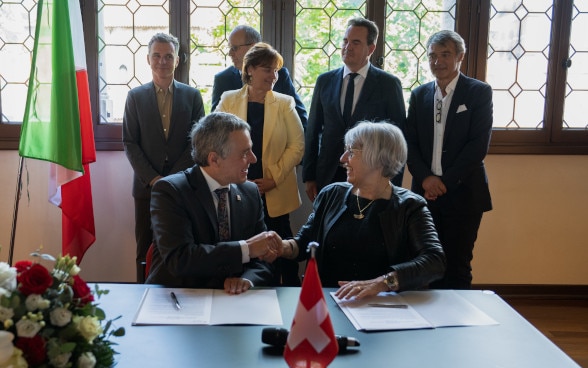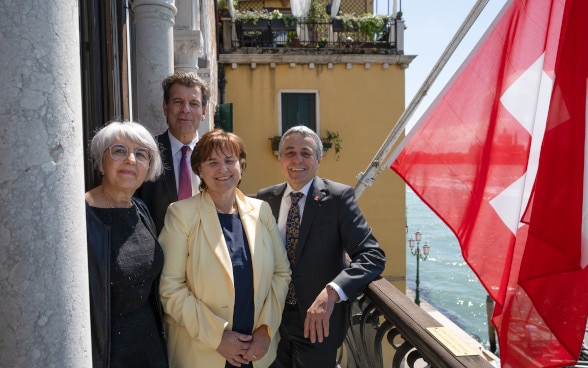Palazzo Trevisan – showcasing Swiss excellence
Palazzo Trevisan degli Ulivi embodies the close ties between Switzerland and Italy. On 9 May, Federal Councillors Ignazio Cassis and Elisabeth Baume-Schneider signed an agreement at the palace which, as of 1 January 2026, will transform this emblematic venue into a platform incorporating various forms of collaboration in the fields of culture, innovation, research and sustainability. But what is the story behind it?

In future, Palazzo Trevisan will host stakeholders from the academic, scientific and business communities as well as cultural figures. © FDFA
Standing proudly in the Sestiere Dorsoduro district, on the Zattere waterfront promenade, the Palazzo exemplifies Venice at the height of its mercantile and political influence. It was built in the 15th century for one of the most renowned noble Venetian families at the time – the Trevisans – whose history is closely tied to the history of Venice itself. The palace's strategic location, whose salons overlook the Giudecca Canal, afforded its owners a considerable advantage for their commercial and diplomatic activities, making the location a genuine crossroads of influence and exchange. The building's form and function also reflected the perfect alliance between economic power and cultural refinement – a duality that encapsulated Venetian aristocracy.
Palazzo Trevisan was built by Italian architect Bartolomeo Bon, and we can recognise the characteristic Gothic architecture with trefoil windows. Together with his father Giovanni, Bartolomeo Bon took the Venetian Gothic style to new heights. All the palace's architectural elements also reflect its mission to be open to the world. It was this mission of openness that drove the Swiss Confederation to acquire the Palazzo's piano nobile* in 1966. The building then became the seat of Switzerland's consulate general, a choice that underscored the importance of the diplomatic ties between the two neighbouring countries and recognised Venice's historic role as a bridge between cultures.
Above all a venue to promote culture and the arts
Beyond the consular needs, the acquisition of the second floor of the palace by the Swiss Confederation demonstrated Switzerland's desire to preserve and showcase a key historic building in the city and therefore to highlight its symbolic commitment to the preservation of Venetian cultural heritage.
And so, although a restructuring of Switzerland's diplomatic and consular network in the early 2000s led to closure of the consulate in Venice, the Federal Office of Culture (FOC) and the Swiss embassy in Rome drew up a concept that sought to reorient the Palazzo's activities towards the promotion of culture and the arts. This was the period when Venice began to set out its ambition to be recognised as the world capital of culture. The piano nobile was fitted out to host exhibitions, concerts, conferences and meetings, becoming a transit point for Swiss artists and researchers staying in Venice to study or work.
Palazzo Trevisan was also the Venetian headquarters of the Swiss Institute in Rome until 2012. In April of that year, by mutual agreement between the FDFA and the FOC, Pro Helvetia took over from the Swiss Institute to bolster Switzerland's presence at the Biennale and to manage the Swiss Pavilion, a role that had previously been played by the FOC directly. Since then, the building has established itself as a major platform for Swiss cultural outreach, offering the Confederation a unique space for dialogue with the main Venetian cultural institutions.
Swiss sustainability, science and excellence
In light of Venice's strong international appeal in culture and the arts, a new commitment to innovation, science and sustainability research emerged in the city from 2021, particularly through the creation of the Fondation Venezia capitale mondiale della sostenibilità (Venice Sustainability Foundation) by the Italian government. The project, which brings together regional and local authorities, academic institutions and businesses, has transformed Venice into a laboratory for sustainable development.

Switzerland, with its expertise in innovation and sustainability, finds a natural outlet for it here: this is also the stated objective of the memorandum of understanding (MoU) signed by Federal Councillors Ignazio Cassis and Elisabeth Baume-Schneider on Friday 9 May in Venice. "Palazzo Trevisan has ambitious plans for the future", remarked Mr Cassis at the signing ceremony. "We are bolstering its central role in the promotion of Swiss culture, and we aim to make it a showcase for Swiss excellence in research, innovation and sustainability."
The new approach will see the palace host representatives from the Swiss academic, scientific and business communities alongside cultural figures, thereby creating a space for encounter and dialogue in the sectors in which Switzerland excels on the international stage. A new administrative structure, under the auspices of the Federal Department of Foreign Affairs (FDFA) will coordinate the platform's activities. Pro Helvetia will continue to play a key role, contributing its cultural expertise as part of a renewable agreement with the Swiss embassy in Rome, and a number of actors have already expressed an interest, in particular the Canton of Ticino, represented at the signing of the MoU by State Councillor Marina Carobbio Guscetti.

Switzerland's decision to expand the mission of this historical venue beyond the cultural dimension therefore reflects a strategic vision that includes contemporary challenges while relying on firmly-established bilateral relations.
* The bel étage or piano nobile is the main floor of a palazzo, usually located directly above the ground floor. It has large windows that are taller and wider than those on the other floors. This floor contains the reception rooms and the bedrooms for important people.
